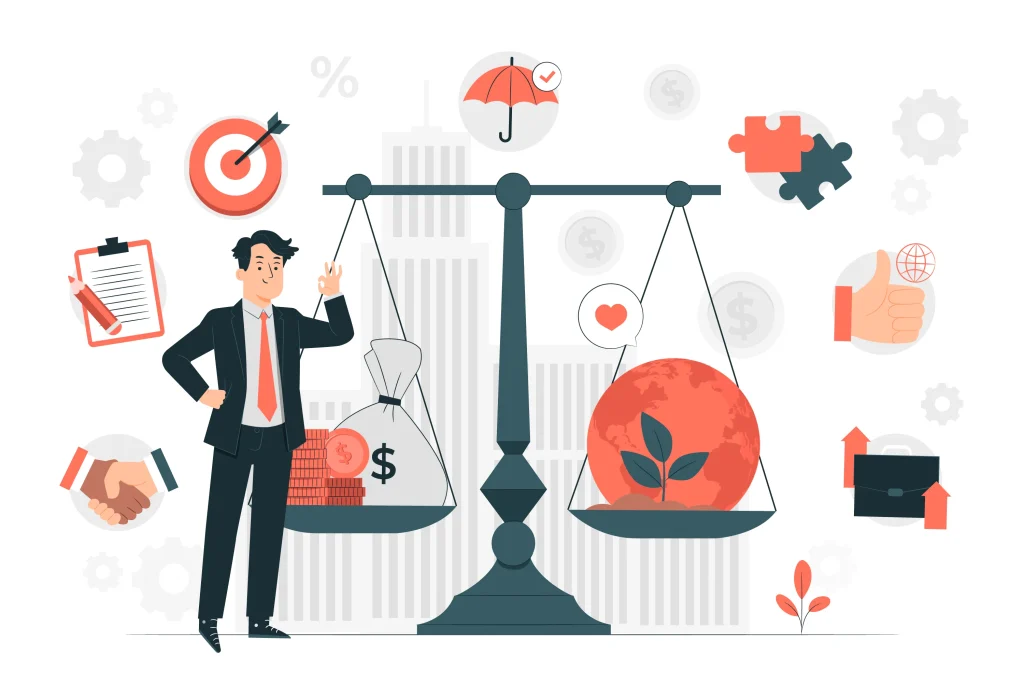
In today’s dynamic business world, a team’s expansion is often synonymous with growth and success. However, this rapid expansion comes with unique challenges for Human Resources (HR) professionals. Navigating the intricate web of HR challenges in a rapidly growing team requires strategic foresight, adaptability, and a deep understanding of the organization’s and its workforce’s evolving needs.
As the heartbeat of any organization, the HR department plays a pivotal role in ensuring that the influx of new talent aligns seamlessly with the company’s vision, mission, and values. This article delves into the multifaceted nature of HR challenges during rapid team growth, exploring key considerations that HR professionals must address to foster a harmonious and high-performing workplace.
Talent Acquisition
One of the immediate challenges in a growing team is ensuring the acquisition of top talent. HR needs to streamline the hiring process, create attractive job descriptions, and implement effective recruitment strategies to attract and retain qualified individuals. Maintaining a strong employer brand and utilizing diverse sourcing channels are crucial for successful talent acquisition.
Streamlining the Hiring Process:
a. Collaboration with Hiring Managers:
Establish a close partnership between HR and hiring managers. Regular meetings and effective communication ensure a shared understanding of job requirements, team dynamics, and the organizational culture.
b. Clear Job Roles and Responsibilities:
Work with hiring managers to define clear job roles and responsibilities. This helps attract suitable candidates and sets expectations for both the new hire and the team.
c. Organized Selection Process:
Develop a structured and organized selection process. Clearly outline the steps from initial application to final interviews, ensuring that both HR and hiring managers are on the same page throughout the process.
Attractive Job Descriptions:
a. Engaging Job Titles and Descriptions:
Craft engaging and accurate job titles and descriptions. Use language that resonates with the target audience and clearly communicates the opportunities and expectations associated with the role.
b. Highlighting Company Culture:
Integrate elements of the company’s culture into job descriptions. Showcase the organization’s values, mission, and vision to attract candidates who align with the overall ethos of the company.
c. Inclusive Language:
Ensure job descriptions use inclusive language to appeal to a diverse pool of candidates. Avoid gender-biased language and promote an inclusive work environment from the first interaction.
Utilizing Diverse Sourcing Channels:
a. Leveraging Social Media:
Utilize social media platforms to showcase the company’s culture, share success stories, and promote job openings. Engage with potential candidates through targeted social media campaigns.
b. Employee Referral Programs:
Establish and promote employee referral programs. Current employees can be valuable sources for identifying top talent, and a structured referral program incentivizes them to participate actively in the recruitment process.
c. Collaborating with Industry Networks:
Build relationships with industry networks, attend relevant events, and collaborate with professional organizations. This expands the reach of recruitment efforts and attracts candidates with specific industry expertise.

Onboarding and Integration
As new team members join, onboarding becomes critical for their successful integration into the company culture. HR should develop comprehensive onboarding programs that cover essential job-related information and emphasize the organization’s values, mission, and expectations. Facilitating effective communication and mentorship programs can aid in the seamless integration of new hires.
Comprehensive Onboarding Programs:
a. Preparing Onboarding Materials:
Develop comprehensive onboarding materials that cover both administrative details (policies, benefits, etc.) and cultural aspects (company values, team dynamics, etc.).
b. Assigning Onboarding Buddies or Mentors:
Pair new hires with experienced employees who can serve as onboarding buddies or mentors. This fosters a sense of belonging and provides a go-to person for questions and support during the initial period.
c. Continuous Improvement of Onboarding Programs:
Collect feedback regularly from new hires and hiring managers to identify areas for improvement in the onboarding process. Adjust onboarding programs accordingly to enhance their effectiveness over time.
Emphasizing Company Culture:
a. Team-building Activities:
Organize team-building activities to strengthen bonds and create a positive working environment. This can include group lunches, team-building workshops, and collaborative projects.
b. Values Integration:
Integrate the company’s values into everyday work life. Recognize and reward behaviors that align with organizational values, reinforcing the importance of these values in the team’s success.
c. Open Communication Channels:
Establish open channels for communication between team members. Encourage the sharing of ideas, concerns, and feedback to create a culture of openness and collaboration.
Facilitating Effective Communication:
a. Utilizing Digital Collaboration Tools:
Implement digital collaboration tools that facilitate efficient communication, especially in a growing team where members may be geographically dispersed. Tools like Slack, Microsoft Teams, or Asana can streamline communication.
b. Regular Team Meetings:
Hold regular team meetings to discuss project updates, share important information, and address any challenges. These meetings can be virtual or in-person, depending on the team’s structure and needs.
c. Clear Communication Protocols:
Establish clear communication protocols to avoid misunderstandings. Define how information is shared, the preferred channels for different types of communication, and expectations for response times.

Employee Development and Training
Continuous learning becomes crucial for employee growth and development in a fast-paced work environment. HR should identify training needs, implement skill development programs, and offer opportunities for career advancement. This enhances individual performance and contributes to the team’s overall success.
Identifying Training Needs:
a. Skill Assessments:
Conduct regular skill assessments to identify gaps in the team’s capabilities. This can be done through performance reviews, self-assessments, or discussions with team leads.
b. Employee Feedback:
Solicit feedback from employees about their own training needs. Employees often have valuable insights into areas where they feel additional training would be beneficial for personal and professional growth.
c. Future Skills Analysis:
Analyze future skills requirements based on the organization’s growth strategy. Anticipate the skills the team will need as it expands and proactively address those needs through training programs.
Skill Development Programs:
a. Tailored Training Plans:
Develop training plans that are tailored to individual and team needs. This may include technical skills training, leadership development programs, and soft skills workshops.
b. Access to Learning Resources:
Provide access to a variety of learning resources, including online courses, webinars, and industry conferences. Support continuous learning and encourage employees to take advantage of these opportunities.
c. Internal Training Sessions:
Organize internal training sessions led by subject matter experts within the organization. This not only shares knowledge but also promotes a culture of mentorship and knowledge-sharing among team members.
Opportunities for Career Advancement:
a. Clear Career Paths:
Define clear career paths within the organization. Outline the steps for career progression, including the skills and experience required for advancement in different roles.
b. Career Development Discussions:
Conduct regular career development discussions with employees. Understand their career goals and aspirations, and provide guidance on how they can achieve those goals within the organization.
c. Recognition of Achievements:
Recognize and reward employees for their achievements and contributions. Publicly acknowledge milestones, promotions, and outstanding performance to reinforce a culture of recognition and appreciation.

Employee Well-being and Work-Life Balance
As teams expand, it becomes increasingly important to prioritize employee well-being and maintain a healthy work-life balance. HR should proactively address burnout, stress, and other well-being concerns. Implementing flexible work arrangements, promoting a positive work culture, and providing mental health support are essential components of ensuring the welfare of employees.
Proactive Well-being Initiatives:
a. Employee Assistance Programs (EAPs):
Implement Employee Assistance Programs to provide confidential support for employees facing personal or professional challenges. EAPs may include counseling services, wellness resources, and mental health support.
b. Wellness Challenges:
Organize wellness challenges or initiatives to promote healthy habits among employees. This could include fitness challenges, mindfulness programs, or initiatives related to nutrition and overall well-being.
c. Stress Management Workshops:
Offer workshops on stress management and resilience. Equip employees with strategies to cope with stress, maintain a healthy work-life balance, and prevent burnout.
Flexible Work Arrangements:
a. Remote Work Policies:
Establish clear policies regarding remote work, including expectations, communication protocols, and guidelines for maintaining productivity. This is especially important in a growing team where flexibility may be crucial.
b. Flextime Options:
Implement flextime options to accommodate varying employee schedules. This flexibility allows employees to balance personal and professional commitments, contributing to overall job satisfaction.
c. Time-off Policies:
Communicate and enforce clear time-off policies to ensure that employees feel comfortable taking breaks when needed. Encourage the use of vacation days and personal time to prevent burnout.

Scalability of HR Processes
HR systems and processes need to scale alongside the team’s growth. This includes updating policies, revising performance management systems, and ensuring that HR technology can accommodate the expanding workforce. Regular evaluations of HR processes and adjustments based on organizational needs are key to scalability.
Updating Policies:
a. Regular Policy Audits:
Conduct audits of HR policies to ensure they align with legal requirements and industry best practices. Update policies as needed to reflect organizational size and structure changes.
b. Communication of Policy Changes:
Clearly communicate any changes to HR policies to all employees. Provide training sessions or informational materials to ensure everyone knows and understands the updated policies.
c. Accessibility of Policies:
Make HR policies easily accessible to all employees. This can be through an intranet, employee handbook, or another centralized platform where individuals can refer to policies as needed.
Revising Performance Management Systems:
a. Regular Performance Reviews:
Conduct regular performance reviews to provide feedback on individual and team performance. These reviews should be aligned with organizational goals and growth objectives.
b. Goal-setting Processes:
Involve employees in the goal-setting process. Set clear expectations and objectives that align with the team’s overall mission and contribute to the organization’s growth trajectory.
c. Continuous Feedback Mechanisms:
Establish continuous feedback mechanisms, such as regular check-ins or quarterly assessments. This allows for ongoing discussions about performance, development opportunities, and any adjustments needed in work strategies.
Adapting HR Technology:
a. Scalable HR Software:
Invest in scalable HR software that can accommodate the growing workforce. Ensure that the software effectively supports recruitment, onboarding, performance management, and other HR processes.
b. Employee Self-Service Portals:
Implement employee self-service portals to streamline HR processes. This allows employees to access information, update personal details, and complete administrative tasks independently, reducing the administrative burden on HR.
c. Data Security Measures:
Prioritize data security when implementing or updating HR technology. As the team grows, sensitive employee information increases, making data security a crucial aspect of HR technology infrastructure.
Conclusion
Navigating HR challenges in a rapidly growing team requires attention to detail in talent acquisition, onboarding, communication, employee development, well-being, and the scalability of HR processes. By implementing these detailed strategies, HR professionals can contribute to a positive work environment, foster employee growth, and ensure the organization’s success during rapid expansion. The comprehensive approach outlined in each section addresses specific facets of HR management critical for sustained success.
This article was created by the FirstHR team. You can find even more helpful HR tips in the Guides section. In the Template section we have prepared for you the most popular HR documents that you can download for free. Enjoy!





